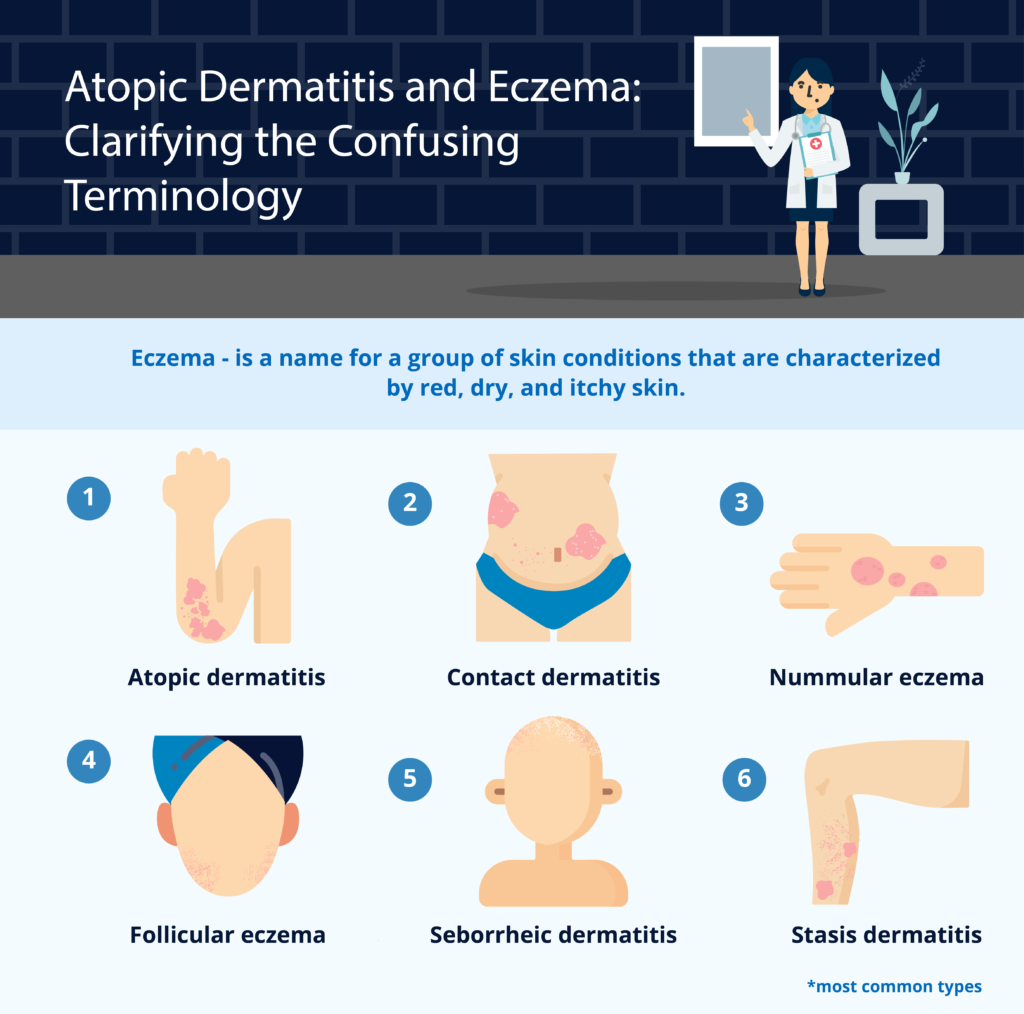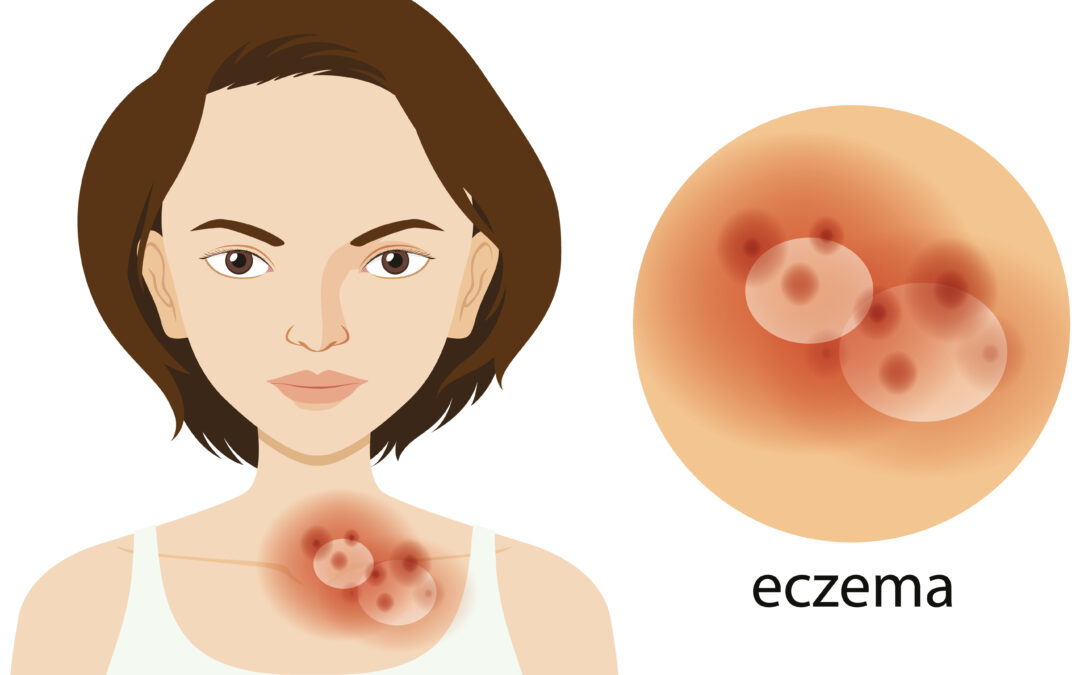
Medical terms such as eczema and atopic dermatitis are quite confusing for people who are not familiar with them. Health conditions are almost always similar and correct diagnosis from a doctor is needed to properly determine it. The same thing goes with skin conditions. One of the most asked questions is the similarity or difference between atopic dermatitis and eczema. The terms are always interchanged. Let us clarify it once and for all.
Eczema and Atopic Dermatitis
Eczema is a general term. It is a name for a group of skin conditions that are characterized by red, dry, and itchy skin. Atopic dermatitis is just one of them and is considered to be the most common type. With eczema being the umbrella category, there are several types aside from atopic dermatitis such as dyshidrotic eczema, nummular eczema, follicular eczema, varicose eczema, gravitational eczema, hand eczema, pompholyx eczema, discoid eczema, asteatotic eczema, contact dermatitis, seborrheic dermatitis, and stasis dermatitis just to name a few. Some very specific details are the only things that make them different from one another.
Since these specific skin conditions are different, it is possible to have more than one of these conditions on your body at the same time. Each of these types has its triggers, symptoms, and treatment. They can also be randomly affecting different areas of the body. That is the reason why a proper diagnosis from your dermatologist is very important. They can help identify even the smallest details to correctly categorize the skin condition you have and be able to prescribe the right treatment.
To correctly diagnose the right type of eczema, your doctor will inspect your skin closely. Your medical history will also be reviewed. For example, nummular eczema has coin-shaped patches on the legs. Dyshidrotic eczema has blisters and red patches on the hands and feet. Contact dermatitis is when the condition is triggered by contact with an irritant or allergen. Seborrheic dermatitis is dandruff. Stasis dermatitis affects the lower legs of older people. Because of this, you must be honest about your allergies so that blood tests and skin patch tests can be done to rule out other conditions.
Final Thoughts
Atopic dermatitis and eczema are similar and often used interchangeably because they both mean to describe red, dry, and itchy skin. With very specific causes and symptoms, they can be classified under different types. This is the main reason why a correct diagnosis from a doctor is needed. Knowing the particular type of skin condition up to the very last detail will help determine the proper medication and skincare regimen to prevent flare-ups. There are underlying conditions or preexisting conditions that affect the skin that need to be determined.
Discover the key to happy skin! Install the NALA app for customized tracking and therapeutic solutions.


